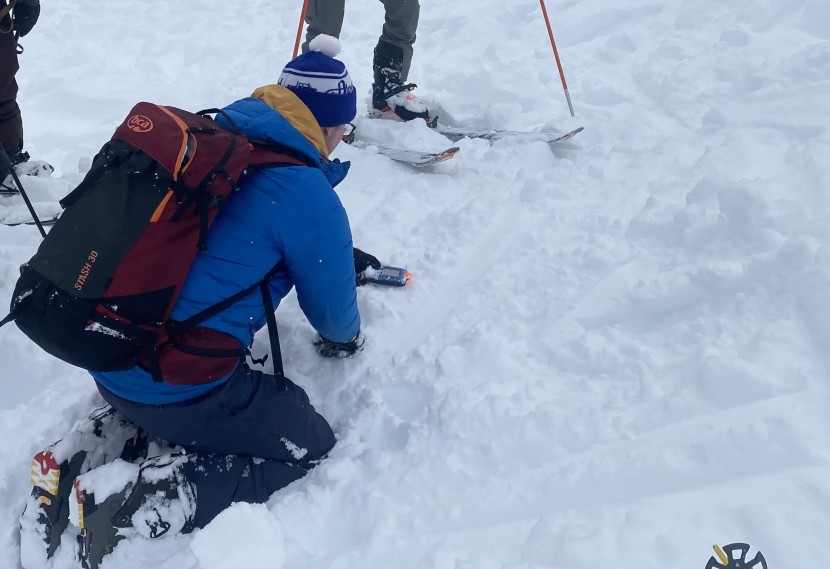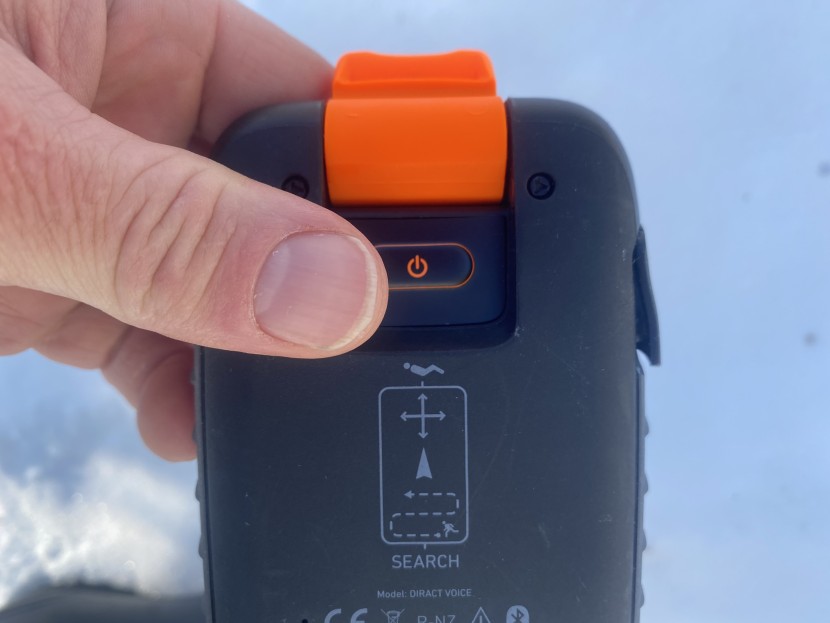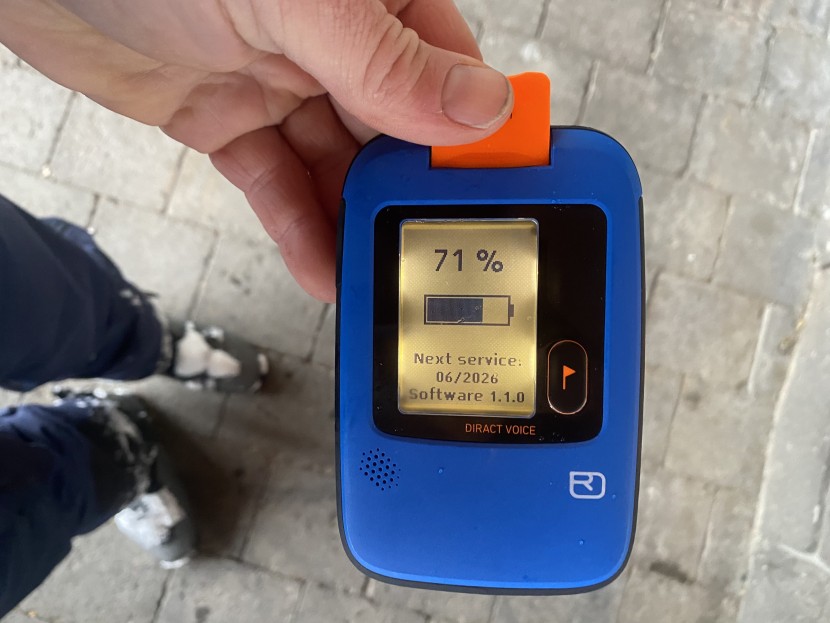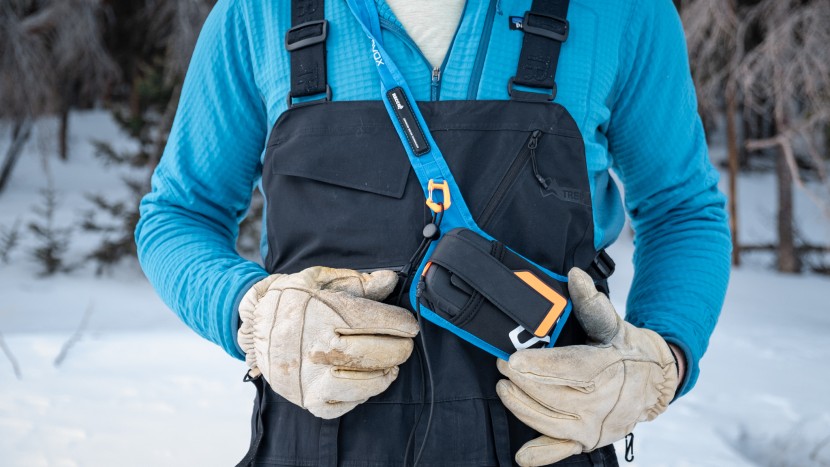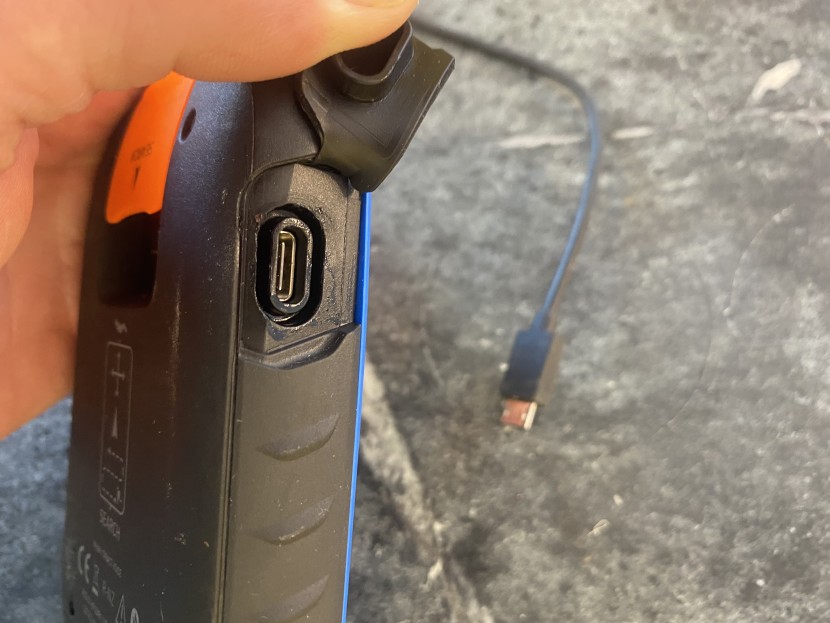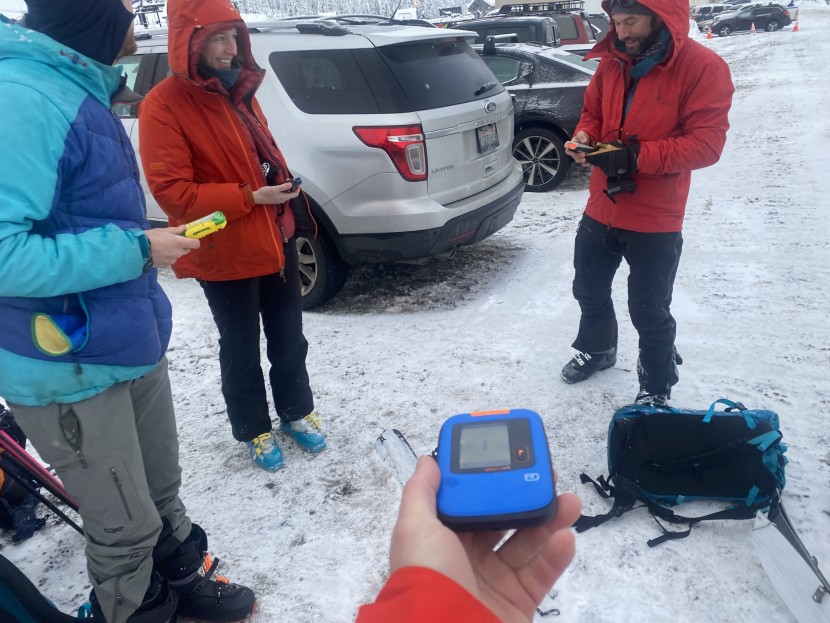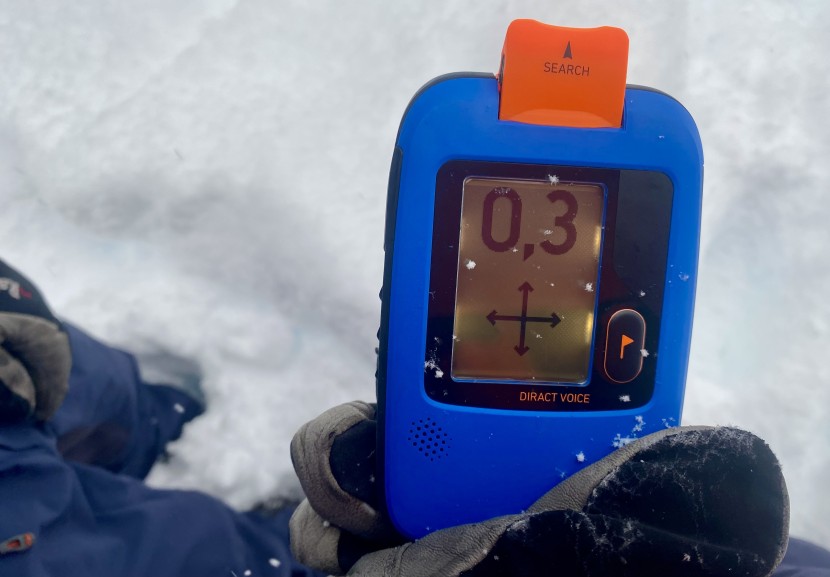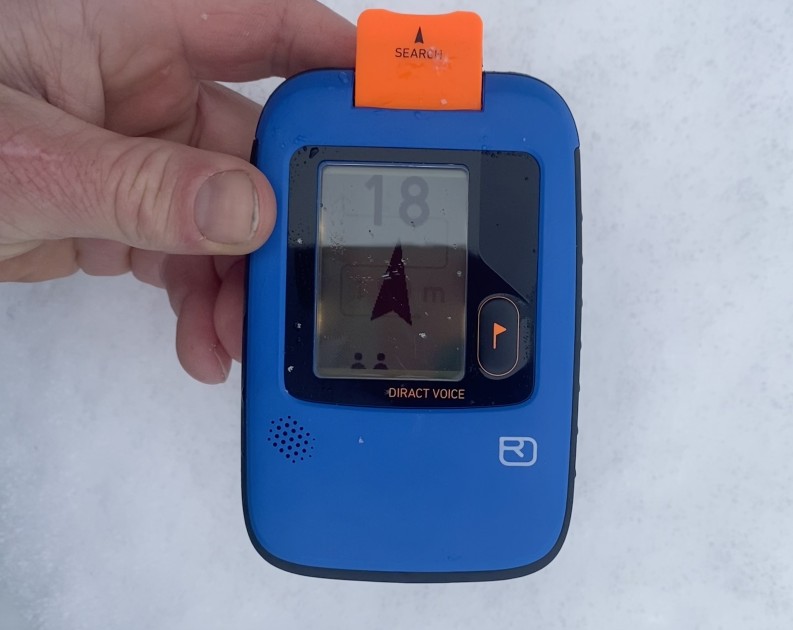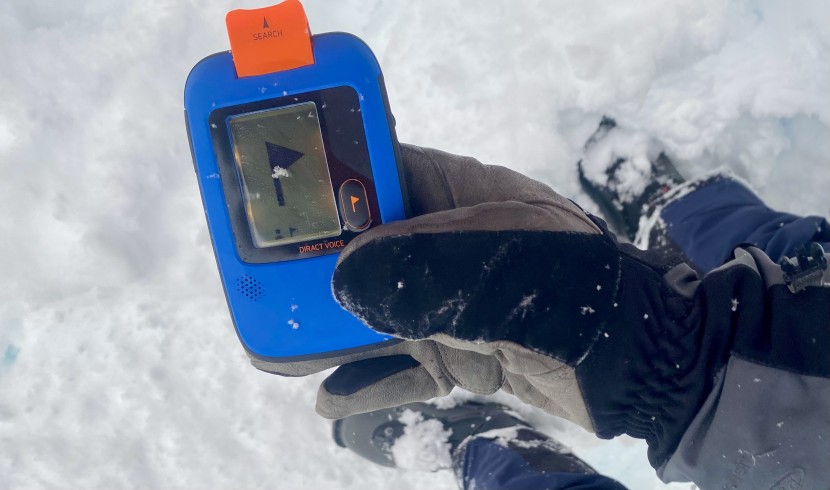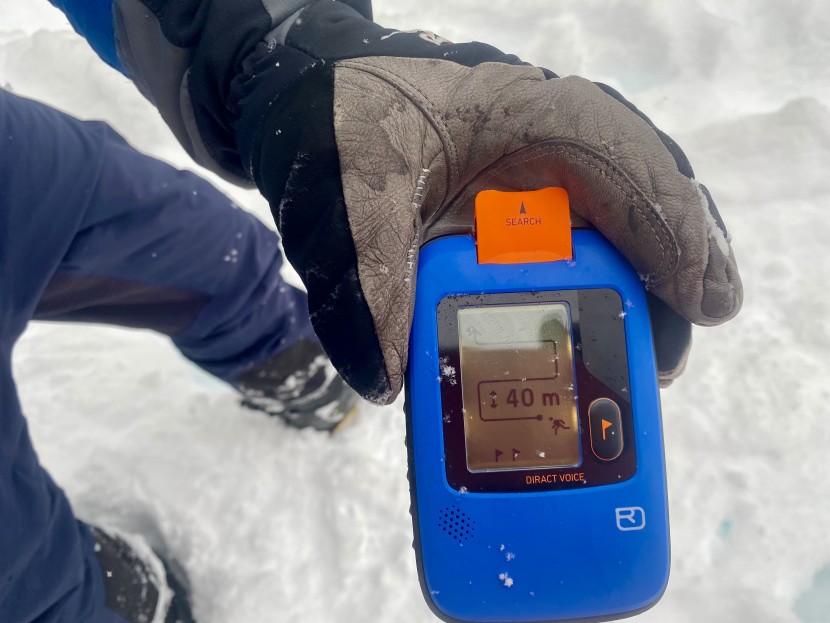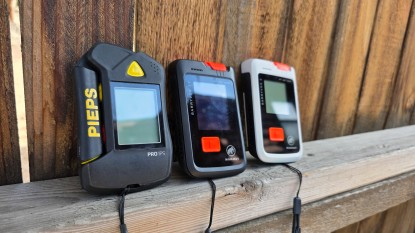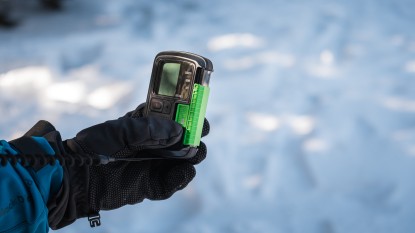
Our Verdict
Our Analysis and Test Results
The Ortovox Diract Voice has created quite a splash with its release, as no other beacon has attempted to make any sounds other than beeping before. Trying to save someone buried in an avalanche is stressful. Speed is of the essence, with statistics showing that a buried person's chances drop off significantly after 15 minutes. The goal of the Diract Voice commands is to walk you through a rescue, helping you stay on track during this incredibly stressful situation.
Speed
The Diract Voice is fast enough for any user to do an efficient search for a single burial, though it is not the fastest beacon in our test. We enjoyed the Diract Voice's processing speed during a fine search as it did not require us to pause and let the beacon catch up while working at an appropriate speed. When considering search speed, it is important to bring up anything that may slow you down. At this beacon's max range, it often wanted to send us the long way around a flux line, resulting in arrows and voice commands that would say “turn around.” This turnaround was quickly followed by another turnaround after the beacon realized the distance was increasing. Other beacons without voice commands allowed us to push through this initial confusion if the beacon was struggling to process the correct direction. But with the Diract Voice barking orders at you, it was hard to ignore the command to turn around, thus forcing a longer coarse search.
Interface
The Diract Voice runs on an excellent, easy-to-use interface. The protected power button is a smart solution to the standard three-way switch on most beacons. Ortovox beacons have long used a flip-open switch to go into search mode. This unique design is not only easy to use but avoids the issue of accidently turning the unit back off after a transceiver check. When turning this unit on, the commands for a group check are clear and easy to understand, and the turn-off confirmation is obvious. The flagging function is also easy to identify and operate.
The Diract Voice is the only beacon we've tested that uses a rechargeable battery system.
While we appreciate this from the perspective of saving money and the environment, our concern is that it doesn't even allow you to add batteries as a backup – say, when you get to the trailhead and realize your beacon's battery is drained. If you know you're the type of person to likely not remember to keep this beacon charged, it's likely a better move to choose a different model that takes batteries.
Notable Features
The voice commands are certainly the most unique feature of Diract Voice. While we hardly think this feature is a game-changer, we do think there are some folks who will perform better in a real-world rescue thanks to these prompts. Novice users will likely appreciate commands like “Run in 50m search strip widths and look out”. More seasoned users even appreciated hearing prompts like “Send, Activated” upon boot up. While some commands make sense regardless of training, it is interesting that commands like “Search the smallest value” is only helpful if you understand bracketing in a fine search.
This Diract Voice is powered by a built-in, rechargeable lithium-ion battery. It charges with a USB-C and provides a very similar level of battery life as most other beacons in this review. Orotovx claims that once charged to 100%, it will be able to send for 200 hrs before searching for an hour. Like many of the newer beacons that have been released in the last few years, this one is Bluetooth enabled and can be paired with your phone or another similar device to update software and configure settings.
While the beacon is booting up, the user has the option to select the group check function, which is convenient for running an efficient transceiver check at the trailhead. This mode shortens the range to approximately one meter and disables the signal lock, letting it freely jump from one transmitting beacon to the next. In this mode, it also displays numbers when you are closer than 1 m, which provides nice visual confirmation for the person you're checking.
Accuracy
For single and multiple burials, the Diract Voice struggled greatly in our accuracy tests. The initial signal acquisition was challenging, and in the first moments of a coarse search, it struggled to accurately point us in the right direction upon first receiving a signal. In the meat of the coarse search, the signal was stronger, but the directional arrows are more jumpy than other beacons we tested, which led us to slow down to ensure we were going in the right direction. In fine search, we were often .5 to 1 meter away from our target when we reached a low point, which forced more probing to pinpoint our target. This distance isn't too alarming, and ultimately, with good probing technique, is adequate to perform a proper pinpoint search. But compared to all the other beacons in our test, this one put us the furthest away from our target each and every time.
Multiple Burials
The Diract Voice uses up to four small icons at the bottom of its screen to show how many signals it's picking up. If there are more than four signals, this beacon will not show an additional “+” symbol or anything of that nature – while this is a bit concerning, we feel this is not a point worth stressing over, as four burials are plenty to deal with.
Overall, this beacon dealt with two signals almost as well as most beacons in our test. However, with three signals, the Diract Voice began to get quite bogged down. It occasionally struggled to switch or flag beacons, especially if the three transceivers were buried in relatively close proximity. If there were four signals, we had to really slow down, and it seriously struggled to keep up with the top-performing models in this test. When doing multiple burial searches, we found the accuracy of the fine search to decrease with each added burial.
For most people, this shouldn't be a major factor in your decision, as only 15% of real-world burials involve multiple burials, and only 5% overall involve more than two. However, for pros whose certification exams involve three beacons (professional level avalanche courses) or four beacons (AMGA ski guide exam), this beacon wouldn't be our first choice.
Range
For all of the beacons we tested, we averaged the range where we most commonly picked up a signal with each beacon during normal searching scenarios, as opposed to the ideal coupling situation manufacturers use to sell their range. The Diract Voice claims to have a 50-meter maximum range, thus a 50-meter search strip width. This stated range would put it in the middle, if slightly on the shorter side of the average range. But based on all of our tests, we found that the average range of the Diract Voice is 28 meters, which is significantly lower than any other beacon in our lineup.
Should You Buy the Ortovox Diract Voice?
While we didn't fall head over heels for this beacon, we still think the unique voice command aspect is useful and could be helpful in a real-life rescue. Otherwise, the Diract Voice is a solid all-around beacon with a particularly intuitive interface. If you don't feel like you particularly need – or want – the voice commands, some of the other entry-level beacons in our lineup offer better range and accuracy at a more reasonable price point.
What Other Avalanche Beacons Should You Consider?
If you're a beginner just starting out on your backcountry journey, you don't really need a fully-featured beacon with all the bells and whistles. Something a bit more affordable that still features an intuitive interface, like the Backcountry Access Tracker S or Black Diamond Recon X will serve you well. If you're a seasoned pro, we recommend either the Mammut Barryvox S or Black Diamond Guide BT for their customizable features that are more geared towards professional use.
| Awards | |
|---|---|
| Price | $450 List Check Amazon (on sale!) |
Overall Score  |
|
| Star Rating | |
| Bottom Line | This beacon offers voice commands to offer direction in an otherwise stressful situation |
| Pros | Voice commands, low profile, built-in rechargeable batteries, intuitive design, comfortable harness |
| Cons | Short range, some voice prompts aren't intuitive, poor accuracy in fine search and at maximum range |
| Rating Categories | Ortovox Diract Voice |
| Speed (30%) | |
| Interface (25%) | |
| Accuracy (20%) | |
| Multiple Burials (15%) | |
| Range (10%) | |
| Specifications | Ortovox Diract Voice |
| Manufacturer's Stated Max Range | 50 m |
| Measured Range | 28 m |
| Flagging Feature | Yes |
| Digital or Analog Modes | Digital |
| Stated Battery Life (in "Send") | 200 hours |
| Number of Antennae | 3 |
| Measured Weight | 230 g |




